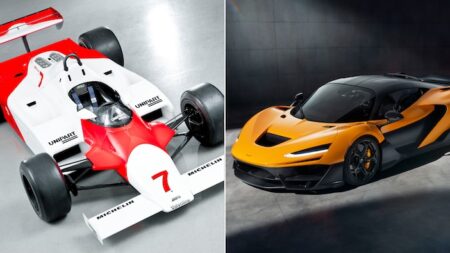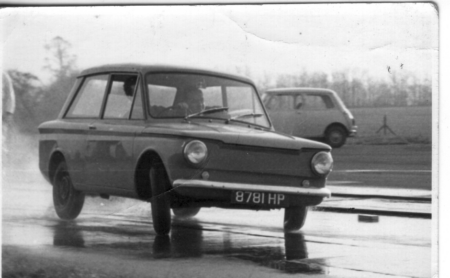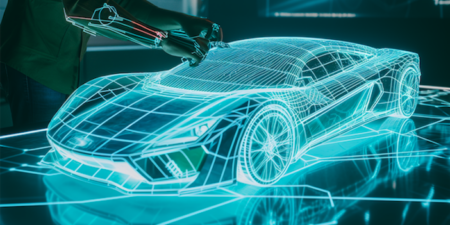VDI: You’ve projected that Nexteer’s EPS steering feel will improve through 2012-13. How will that be achieved?
Paul Poirel (pictured): We have a complex series of motor commands that we have developed over the years to improve steering feel. It’s become quite complicated for the system engineer to figure out out of the dozens of tuning tables and calibration parameter what combination will provide the steering feel that the customer wants. Moving forward, we are planning to have a much more direct motor command. Instead of having an interpolated way of commanding the motors with intermediate variables, we have a much more direct access to the basic physical inputs that will command the motor. I cannot give too much more detail because there is some proprietary software behind that. Because we eliminate the interpolation, we have less time lag in the motor command, so we have much more responsive command of the motor, and that should simplify the task of the system engineer a lot.
What sort of applications are you looking at for your new dual-pinion EPS?
It’ll be for intermediate applications. We have products for small vehicles, and heavier luxury vehicles; in the transitional range between, for C-D segment cars, we don’t have sufficient assist capabilities with either column EPS or single-pinion EPS. We may have some packaging issues related to rack EPS and dual-pinion may provide some additional freedom from a packaging standpoint. There are some limitations because it’s typically at the 12-13kN assist load; beyond that we need to go to a rack EPS. We’re currently application-ready in that we’ve built sufficient numbers of prototypes, have proven that our design is sound and robust and can quote on production. We are in the quotation phase with several OEMs but have yet to be awarded a production program. We’re looking at a 2014 SOP date.
What’s the latest news on your proposed integrated immobilizer system?
We are approaching our customers, who are expressing some interest, however we are still in the advanced development phase. We’re actively discussing with the OEMs what it would require from their side, the demands on other systems in the vehicle, the pros and cons, and so on. In the automotive world, nothing is as simple as it looks!
More generally, is it the Tier 1s driving EPS development, or is it coming from a customer request standpoint?
A bit of both. We try to anticipate customer needs, connecting the dots in the feedback we get from different OEM departments. For instance, on our own we’ve developed an algorithm to filter [out] the effect of wheel imbalances, which was an attempt to help our customers reduce their warranty issues. In another internal initiative, we’ve observed that packaging constraints are becoming more and more stringent, which led us to this idea of integrating the motor housing with the assist mechanism. On the other hand, there are other examples where we’ve been approached by OEMs who’ve had an idea and needed our help to provide some functions. Park assist, for example, was initially an initiative from the OEMs, who approached us to find out how EPS could be controlled by the trajectory software that controls the parking maneuver.
How do you see the future of those park assist systems?
We’ve started to see interest in offering it as an option in the C-segment, and is even being included, in the customer specification at least, in B-segment vehicles. So we need to be ready with algorithms and software, even though there is no firm decision yet from the OEM to offer it.
What new applications might there be for EPS torque overlay?
Regarding functions such as wheel imbalance compensation or lane keeping assistance, we are in the process of proving to our customers that we have a robust, safe and effective design, but we don’t have it on the road yet. These functions are pretty much independent of the actual EPS hardware. Our building blocks mean that we can reuse many common modules between the architectures, both in the electrical or software architecture, and also for some mechanical building blocks.
And finally, steer-by-wire: might it never happen at all?
To be honest, steer-by-wire has constantly 10 years away ever since I joined steering in 1997! Nobody’s willing to make the jump and right now, when you weigh up what you could gain in terms of packaging space in the vehicle and functional improvement, against safety and cost considerations, then there is not a good case for steer-by-wire at the moment. Even if electric vehicles proliferate, I think the current EPS offering is well suited to electric vehicles. The only advantages of steer-by-wire would be a speed-dependent variable steering ratio – something that the mechanics of the rack and pinion mean is not really achievable today – and freeing up some packaging space in the vehicle that could be taken up by other functions. But from a power consumption standpoint, it would be equivalent to the current EPS systems, and we’re continuously improving that anyhow. So it’s a safe bet that nothing will happen in the next 10 years, but I would not be too pessimistic – every engineer likes the challenge of a new technology. Let’s talk again in 10 years!




